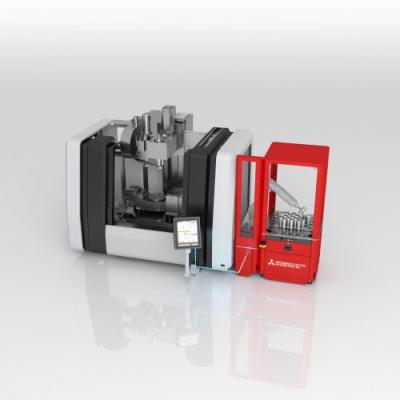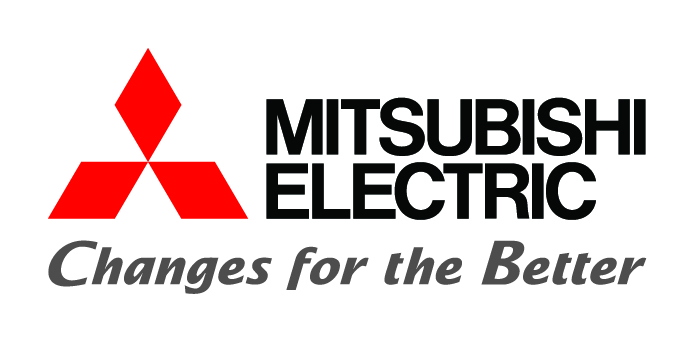
Designed for easy set-up and use, Mitsubishi Electric´s comprehensive offering of machine tending solutions provides manufacturers with the answer to labor shortage challenges while improving productivity and lowering operating costs.
Mitsubishi Electric Automation Inc.´s LoadMate Plus™ product line is an engineered solution that is easy to implement while offering flexibility and mobility to address the ongoing challenge of labor shortages throughout the manufacturing sector. Machine tending is the process of loading and unloading parts or materials into a machine tool center, most commonly used with vertical machining center mills and turning centers (lathes) including CNC Swiss Machines.
Automation is becoming increasingly attractive to manufacturers due to labor shortages and pressures to maximize productivity. Through flexible connectivity via Ethernet and easy programming through the Direct Robot Control (DRC) feature of Mitsubishi Electric´s M8 Series, machine tending can benefit customers that may not have experienced robot programmers available. In addition to DRC, almost any CNC machine can be connected to a shop floor via discrete I/O for non-M8 CNC controls from Mitsubishi Electric and other companies. Further support is available through Mitsubishi Electric trained engineers to service both robot and CNC. Additionally, Mitsubishi Electric Automation offers a 5-year robot maintenance and warranty program.
"Mitsubishi Electric Automation Inc.´s machine tending solutions portfolio provides a cost-effective answer to ongoing labor shortages and maximized productivity challenges many manufacturers are currently experiencing. Our experts work closely with your team to find and implement a turn-key solution that is seamlessly integrated, fully supported, and delivers ROI quickly" said Dave Simak, service product manager at Mitsubishi Electric Automation Inc.
Contact Details
Related Glossary Terms
- centers
centers
Cone-shaped pins that support a workpiece by one or two ends during machining. The centers fit into holes drilled in the workpiece ends. Centers that turn with the workpiece are called “live” centers; those that do not are called “dead” centers.
- computer numerical control ( CNC)
computer numerical control ( CNC)
Microprocessor-based controller dedicated to a machine tool that permits the creation or modification of parts. Programmed numerical control activates the machine’s servos and spindle drives and controls the various machining operations. See DNC, direct numerical control; NC, numerical control.
- machining center
machining center
CNC machine tool capable of drilling, reaming, tapping, milling and boring. Normally comes with an automatic toolchanger. See automatic toolchanger.
- turning
turning
Workpiece is held in a chuck, mounted on a face plate or secured between centers and rotated while a cutting tool, normally a single-point tool, is fed into it along its periphery or across its end or face. Takes the form of straight turning (cutting along the periphery of the workpiece); taper turning (creating a taper); step turning (turning different-size diameters on the same work); chamfering (beveling an edge or shoulder); facing (cutting on an end); turning threads (usually external but can be internal); roughing (high-volume metal removal); and finishing (final light cuts). Performed on lathes, turning centers, chucking machines, automatic screw machines and similar machines.

